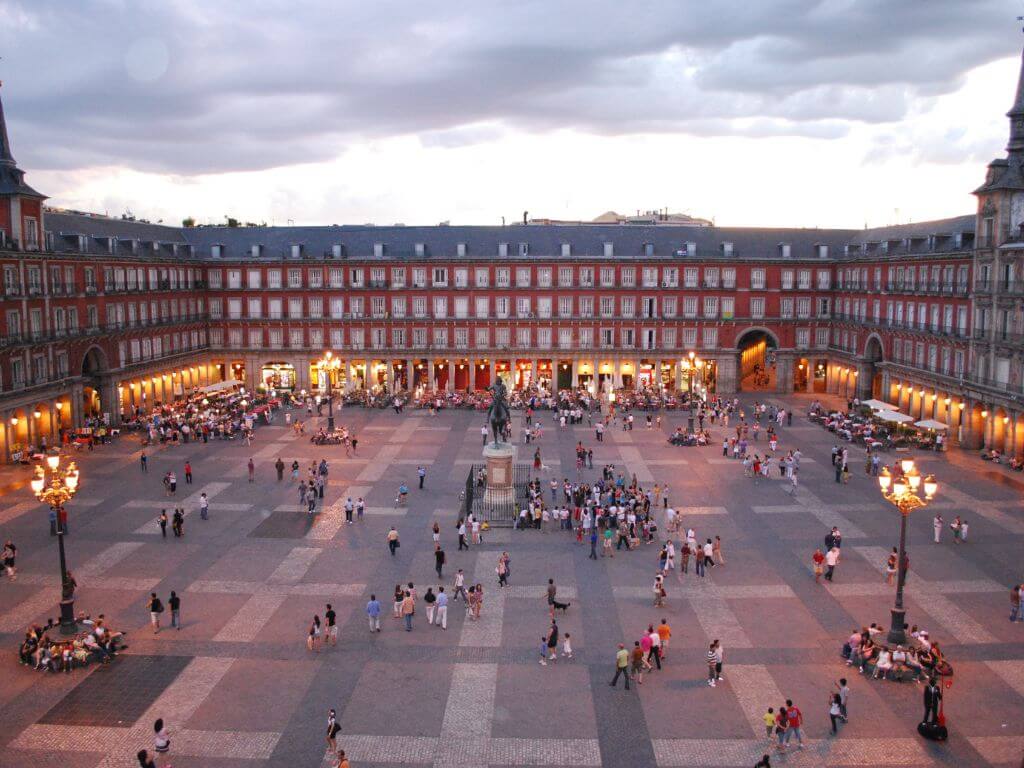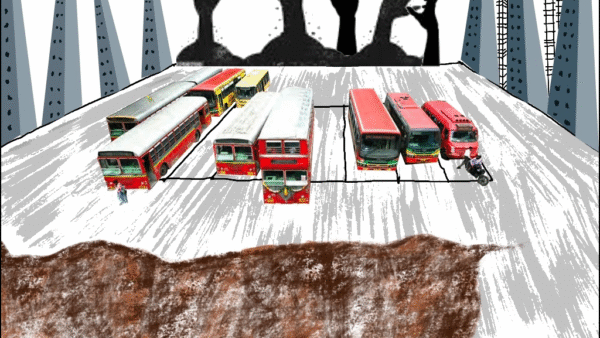After India’s mega cities New Delhi, Mumbai and Kolkata recorded extremely poor air quality in the past few weeks,[1] especially after Diwali, experts cited examples of international cities which improved their air quality. London, Copenhagen, Beijing, and Oslo are among the cities that used to be badly polluted once but have since taken steps to improve their air quality.
At the heart of these measures is the strategy to cut down on fossil fuel consumption and, therefore emissions, across a range of activities but especially in transport options by moving to Electric Vehicles (EVs), purposefully creating zones where emissions are low, and increasing their green cover and tree spread which help absorb the noxious emissions.
Copenhagen, Oslo and Paris ranked in the top bracket of 42 cities in Europe for fighting air pollution by adopting EVs and reverting to the use of cycles. Amsterdam and Hamburg are fourth and fifth; while Granada, Dublin and the Greater Manchester area are at the bottom of the list, according to data from the non-profit Clean Cities Campaign.[2]
The worst air index for some of the cities such as Oslo, Copenhagen, Bogota, London, is still a two-digit figure, prompting them to look for green solutions. A lesson India can learn, as a staggering Air Quality Index (AQI) of 300 and above has only yielded half-hearted efforts.
Most cities battling air pollution have put brakes on vehicular emissions, a major contributor to bad air. Creating spaces for pedestrians to encourage walking, building bicycle lanes on roads, and limiting the use of private cars through an efficient public transport network are commonly followed measures. Paris, Madrid and Oslo banned cars in the centre of the city, where car congestion tends to be high, to reduce air pollution. Bangkok, the capital of Thailand, launched the Green Bangkok 2030[3] project to increase the city’s tree cover to improve air quality.
Bogota, capital of Colombia
AQI: 51 (November 30)
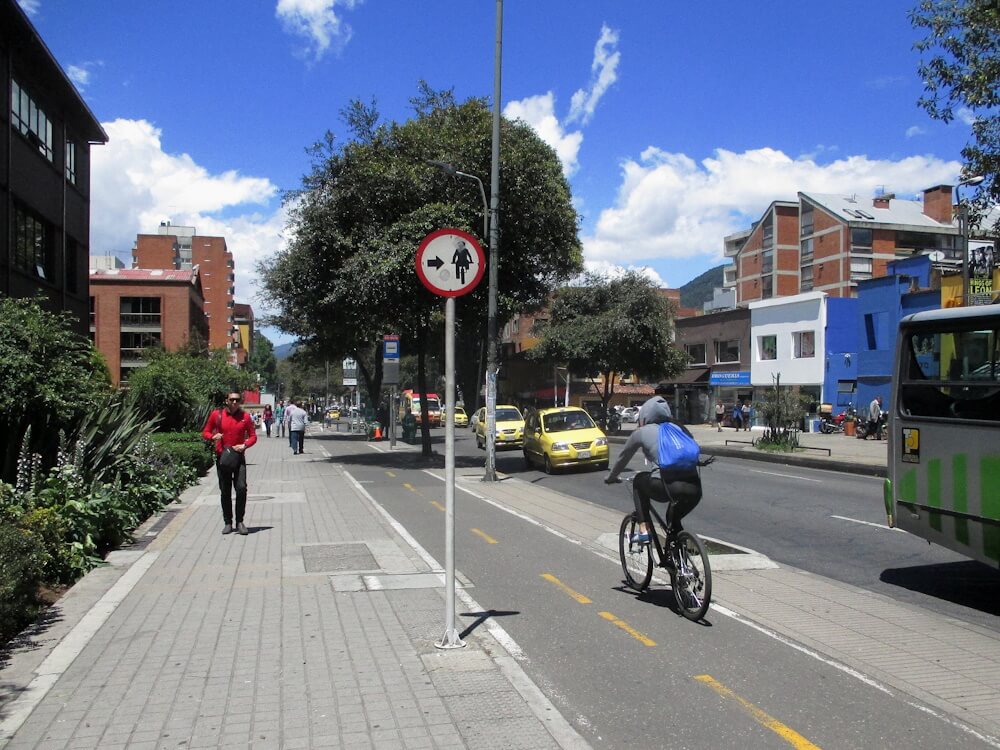
Photo: Felipe Restrepo Acosta/ Wikimedia Commons
Bogotá, capital of the republic of Colombia, was one of the most congested cities in the world with 70 percent of the pollution attributed to automobiles “Although only 11 percent of the trips across the city are in private vehicles, this is responsible for between 40–70 percent of all CO, CO2 , VOC, NOx and SO2 emissions from mobile sources.”[4] About 10 percent of the total deaths were attributed to urban air pollution, public health authorities identified respiratory illnesses as the main cause of morbidity and mortality for children under 5 years.[5]
The city has been taking measures to fight air pollution since 1998 when it started Bogotá air quality network (RMCAB), and today it comprises 14 automatic monitoring stations (13 fixed stations and a mobile one) in its urban areas. The city adopted a vibrant cycling culture by adding bike lanes to encourage people to ditch their cars.
“From 1999 to 2021, average annual particulate pollution increased by 44.7 percent and stood at a level that is 2.7 times the WHO guideline.”[6]
In 2020, it signed the C40 Clean Air Cities Declaration — agreeing to set pollution goals that meet or exceed national targets, to implement substantive clean air policies by 2025, and publicly report on their progress.
It started the Ciclovia programme,[7] in which cars are completely banned from certain routes on Sundays and public holidays, allowing cyclists, pedestrians and joggers to work out in a car-free environment. But Bogotá is not resting on the improvements made so far, the government has undertaken to build more bicycle lanes and plant more than 8 lakh trees. In March 2020, Bogota added 80 kilometres of temporary bike lanes to the already existing network of 560 kilometres of lanes and plans to augment it with 60 kilometres in the future.
“The city also has a green recovery plan which it unveiled in 2020. In this, Bogotá announced a new air quality target—reducing concentrations of fine Particulate Matter (PM10 and PM 2.5) by 10 percent by 2024. The plan focuses heavily on sustainable, multimodal mobility, and cooperation with nearby municipalities. A key segment is adding to the bike lane network and improving pedestrian networks to promote alternative and sustainable transport modes. The additional lanes allowed an 80 percent drop in air pollution.”[8]
Copenhagen, capital of Denmark
AQI: 4 (November 30)
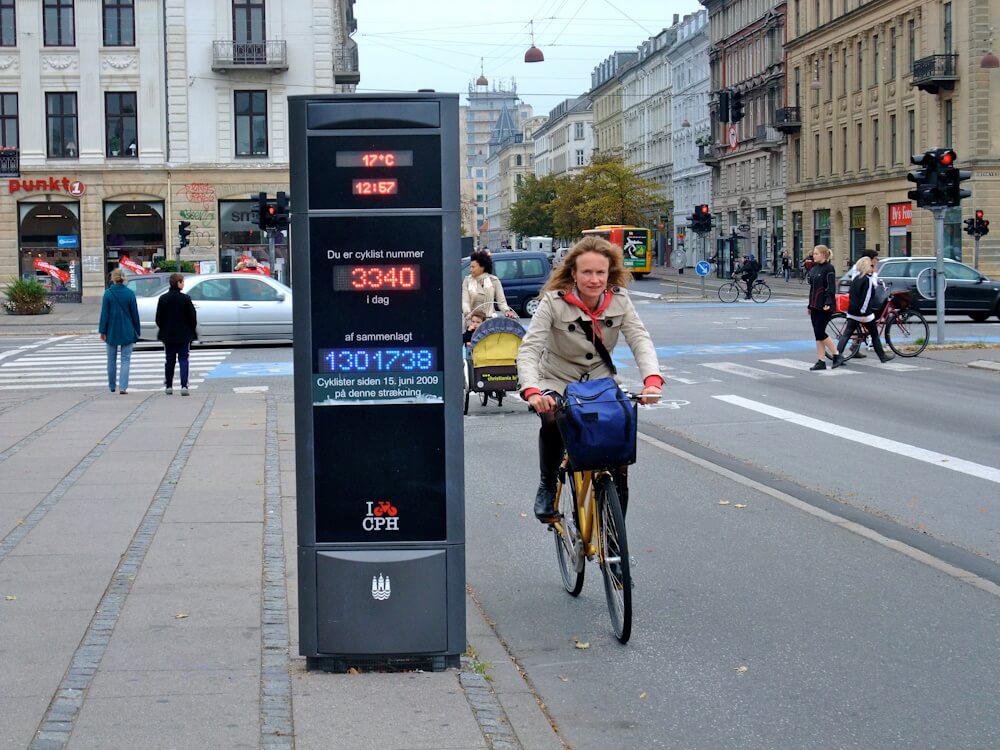
Photo: James Cridland/Wikimedia Commons
Despite being known as one of the greener and more liveable cities in the world, Copenhagen struggled with polluted air. Over the years, despite specific areas showing higher levels of PM 2.5 than the rest of the city, Copenhagen, the capital of Denmark, has shown how to combat air pollution. It now boasts of a good Air Quality Index (AQI) of between 15 and 55, though it has a few bad air days.
In 2019, Copenhagen Solutions Lab started a project on air pollution. Applying data from air measurements that it carried out together with Google and Utrecht University, it set up concrete guidelines for urban planning that takes human needs and air pollution into consideration.[9]
The now bike-friendly city inched towards a healthy AQI by reducing vehicular emissions through efficient public transportation systems, sustainable urban planning, prioritising cycling lanes, and pedestrian-friendly infrastructure. The city has invested heavily in wind turbines; it cut its emissions by moving away from fossil fuels to generate heat and electricity.
“Copenhagen is cited as a case study in climate discussions for its single-minded purpose of substantially reducing the number of cars on its streets and imposing restrictions on highly-polluting vehicles as well as actively promoting the city’s bicycle culture further.
All cars in the municipal fleet are electric or hydrogen powered. In the city’s climate plan, the target is to achieve a complete transformation to electricity, hydrogen or biofuels. Copenhagen is one of Europe’s most prolific cycling cities. In 2013, the modal split showed a very low rate of car use with 29 percent. Public transport was at 28 percent, cycling at 36 percent, and walking at 7 percent.”[10]
Oslo, capital of Norway
AQI: 7 (November 30)
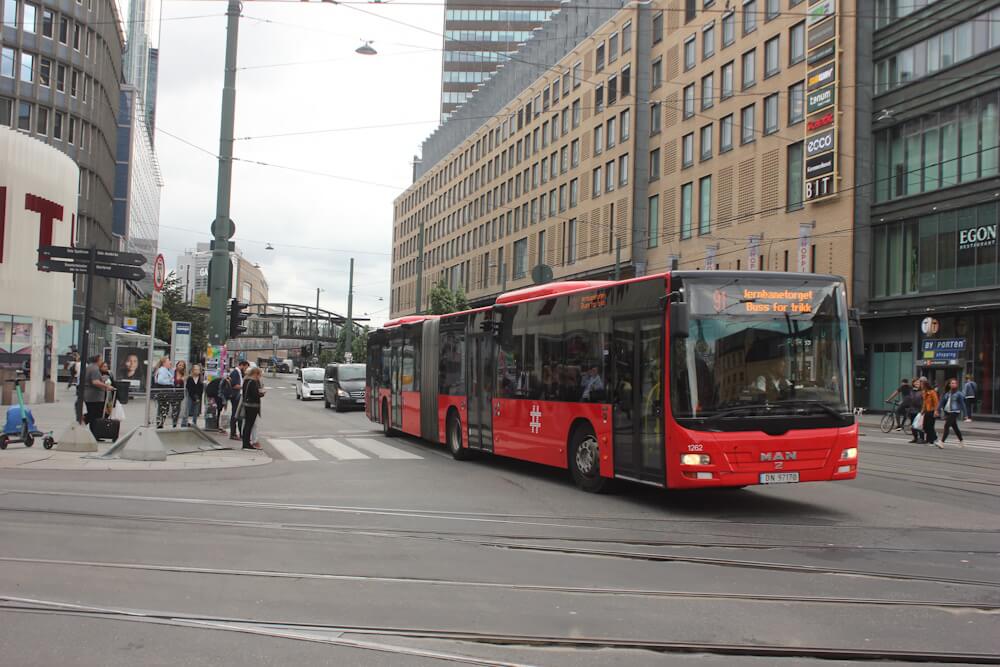
Photo: Captain Raju/Wikimedia Commons
Norway’s capital, Oslo, has taken the same route that most other cities did – address the emissions from private transport. It now aims to be the world’s first emissions-free city by 2030. Its Car-Free Livability Programme initiative, launched in 2015, was primarily introduced to reduce the city’s car traffic by 33 percent[11] by 2030 which encourages cycling and walking. The city has dedicated resources to building pedestrian spaces and improving its public transport, all to discourage the use of private cars.
Oslo today has the highest number of electric vehicles in the world per capita, which alone has decreased CO2 emissions by 35 per cent since 2012, UN Environment reports.[12]
“Its green measures include the use of hydropower for electricity and heating in the country, leaving transport as one of the most significant emitters…
In 2018, the Parliament of Norway adopted a resolution in order to stop emissions from cruise ships and ferries in the West Norwegian Fjords – Geirangerfjord as well as Nærøyfjord World Heritage site – by 2026, thus making the fjords in Norway among the world’s first zero emission areas at sea.”[13]
Mexico City, capital of Mexico
AQI: 91 (November 30)
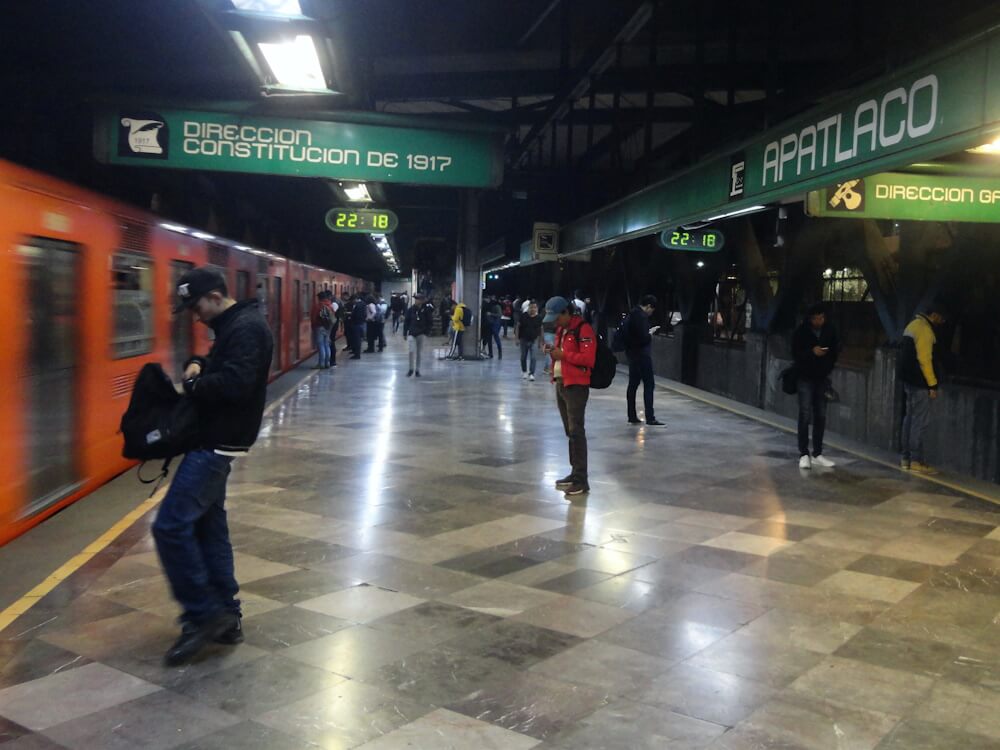
Photo: Juan Carlos Fonseca Mata/Wikimedia Commons
Labelled as the world’s most polluted city by the United Nations in 1992, Mexico City has been battling air pollution for years. “In Mexico, more than 48 thousand deaths were attributable to air pollution exposure in 2019, the highest figure reported in the indicated period. In comparison to 2010, this represents an increase of more than 20 percent.”[14]
Mexico has reduced household pollution exposure by encouraging people to replace the traditional smoke-emitting stoves with stoves connected to a chimney that directs any released fumes out of the house preventing indoor air pollution which is a major threat to health, particularly for women and young children, who spend many hours close to the fire. Particulate matter smaller than PM10 fell from an average of 160 µg/m3 in 1989 to 40 in 2014.
It built bus rapid transit lines and introduced ‘no-drive’ days in 1989 to reduce the numbers of cars on the roads. The ‘No-Drive Days’ programme, also known as ‘Hoy No Circula’, prohibited drivers from using their vehicles on one weekday per week.[15]
In 2018, the Mexican government announced a new policy which required that all heavy-duty vehicles sold in Mexico meet the highest filter-based standards in practice across the United States, Canada and much of the European Union.[16] In 1995, the city launched an extensive programme named ProAire[17] which had concrete measures for sustainable development in eight areas: reduction of energy consumption, cleaner and more efficient energy across all sectors, promotion of public transport and regulation of fuel consumption, technology shift and emissions control, environmental education and sustainability, culture and citizen participation, green areas and reforestation, institutional capacity building and scientific research, as well as strengthening of health protection.
Today, the programme is into its fourth iteration with added measures such as the renewal of bus fleet, which aims to minimise unnecessary emissions by amending the routes and shifts based on algorithms, introducing buses that can meet the EURO V standard, and expanding the city’s subway network and bike-sharing initiatives, both of which aim to reduce people’s dependence on private vehicles.[18]
London, capital of England
AQI: 55 (November 30)
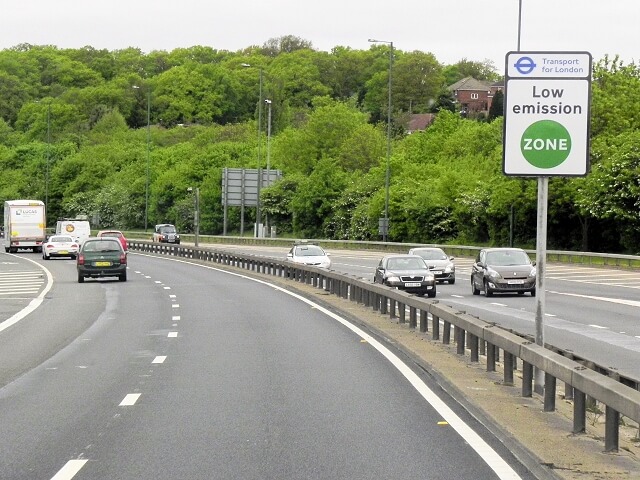
Photo: David Dixon/Wikimedia Commons
London learnt a lesson from the 1952 great smog which had drastically reduced visibility. The incident, which killed thousands, prompted the government to take measures such as implementing the Clean Air Act to prevent a recurrence. It succeeded to a huge extent.[19]
The city cleaned up or shut polluting factories, and completely replaced coal with gas. In 2019, it launched Breathe London,[20] empowering residents to tackle air pollution locally. Community groups are provided with free sensors to monitor the air quality in their area and take action.
On November 25, 2022, London’s mayor Sadiq Khan announced plans to expand the Ultra Low Emission Zone (ULEZ) to cover the whole of Greater London so that “5 million more Londoners can breathe cleaner air”. The ULEZ was introduced in April 2019 and is the world’s strictest low-emission zone, covering a range of vehicles.
Beijing, capital of China
AQI: 37 (November 30)
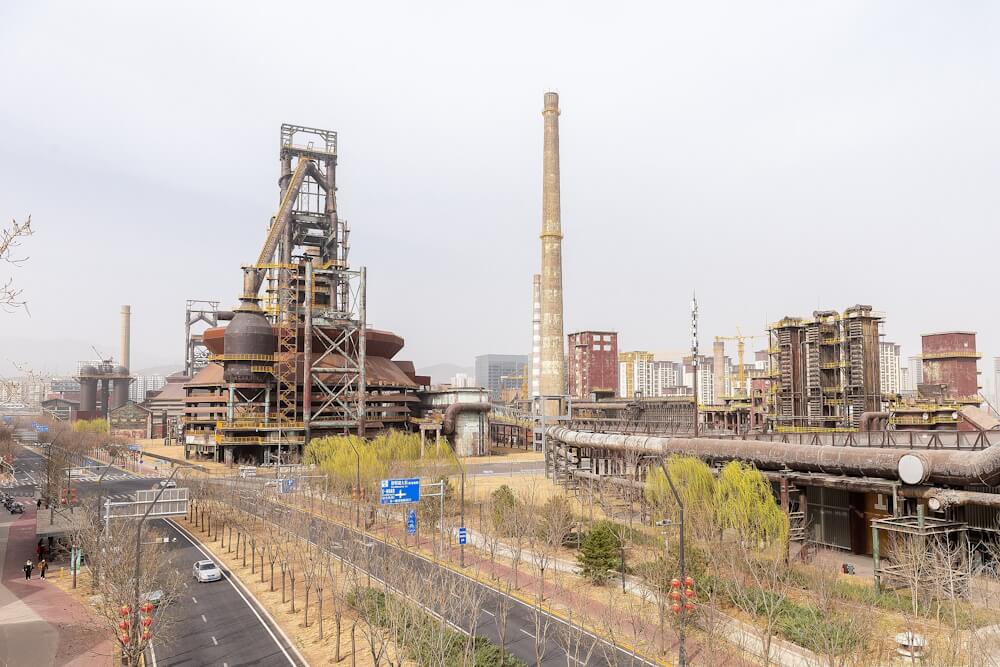
Photo: Wikimedia Commons
Ten years ago, Beijing recorded one of the worst air pollution levels in the world. Its ambitious plan to fight air pollution seems to have yielded significant results, making it a model for other cities to imbibe. Forming a national air pollution plan in 2013, it scaled up its fight against air pollution by increasing its budget from just over $430m (£350m) in 2013 to $2.6bn in 2017.[21]
“In 2001, Beijing implemented the ‘No-Drive Days’ programme, restricting private car usage to one weekday per week. In 2014, it launched the ‘War on Pollution’ campaign and took measures such as phasing out coal-fired power plants and promoting. electric vehicles. In 2019, the city released a new air quality action plan and aims to reduce PM2.5 concentrations to 35 micrograms per cubic meter by 2030.”[22]
The city built air quality monitoring stations, curbed cars on roads, cut emissions, reduced high-polluting industrial activity such as the manufacturing of iron and steel. In 2011, it shut Shougang Park, a steel mill established in 1919, to fight air pollution and has now transformed the area into a citizen-friendly green space.[23]
In 2013, the city was filled by heavy smog, causing its air quality to worsen. Since then, Beijing has upped its efforts to curb pollution.
“China has had staggering success in combating pollution since declaring a ‘war’ on pollution in 2014, reducing its pollution by 42.3 percent from 2013 to 2021 and extending its population’s average life expectancy by 2.2 years, if these reductions in pollution are sustained.[24]
Cover photo: A huge plaza in Madrid. Credit: Wikimedia Commons

